


|
||
|
||

Optical frequency laser communication links have many advantages over radio frequency (RF) links:
SpaceX is equipping its new satellites with inter-satellite laser links (ISLLs). They now have over 8,000 optical terminals in orbit (3 per satellite) and they communicate at up to 100 Gbps. The other low-Earth orbit Internet service providers will follow SpaceX’s lead.
Optical communication works well between satellites in the vacuum of space, but optical signals are weakened and distorted by clouds, rain, water vapor, dust, heat gradients, pollen, etc. in the atmosphere so today SpaceX and others use RF frequencies for communication between space and the ground.
Given the long list of optical advantages, many organizations are working on technology to adjust for atmospheric interference and use optical communication between space and the ground. The following are a few examples of optical communication research and development by NASA, universities, the military, private industry, and the Chinese.
Ten years ago, NASA demonstrated optical communication between a satellite orbiting the moon and Earth, and they are updating that now. They have a data relay satellite in geosynchronous orbit for relaying data from other satellites to the ground and they are working on transmission from deep space beyond the Moon so we will be able to see video from Mars when we land there. They have also transmitted data between a cubesat with a 2.3 kg payload and the ground at a rate of 200 Gbps.

Researchers at ETH Zürich have transmitted data from a mountaintop to their lab 53 kilometers away at up to 0.94 Tbit/s/channel. (Note that the top of the stratosphere is only 50 km from the ground). They adjust for atmospheric variance using sophisticated algorithms and terminals with adaptive optics that can correct the wave phase 1,500 times per second. Their technology can scale up to 40 channels and they are working on more efficient modulation schemes.
The ETH Zürich transmission was from a fixed point on top of a mountain to their lab—how about from a moving satellite? LEO satellites move across the sky at an angular tracking rate of ~1 deg/s and researchers at the University of Western Australia have demonstrated that they can maintain contact with a drone moving back and forth at that rate.
In Ukraine, SpaceX Starlink has demonstrated both the military value of satellite Internet and the drawback of being dependent on a private company.
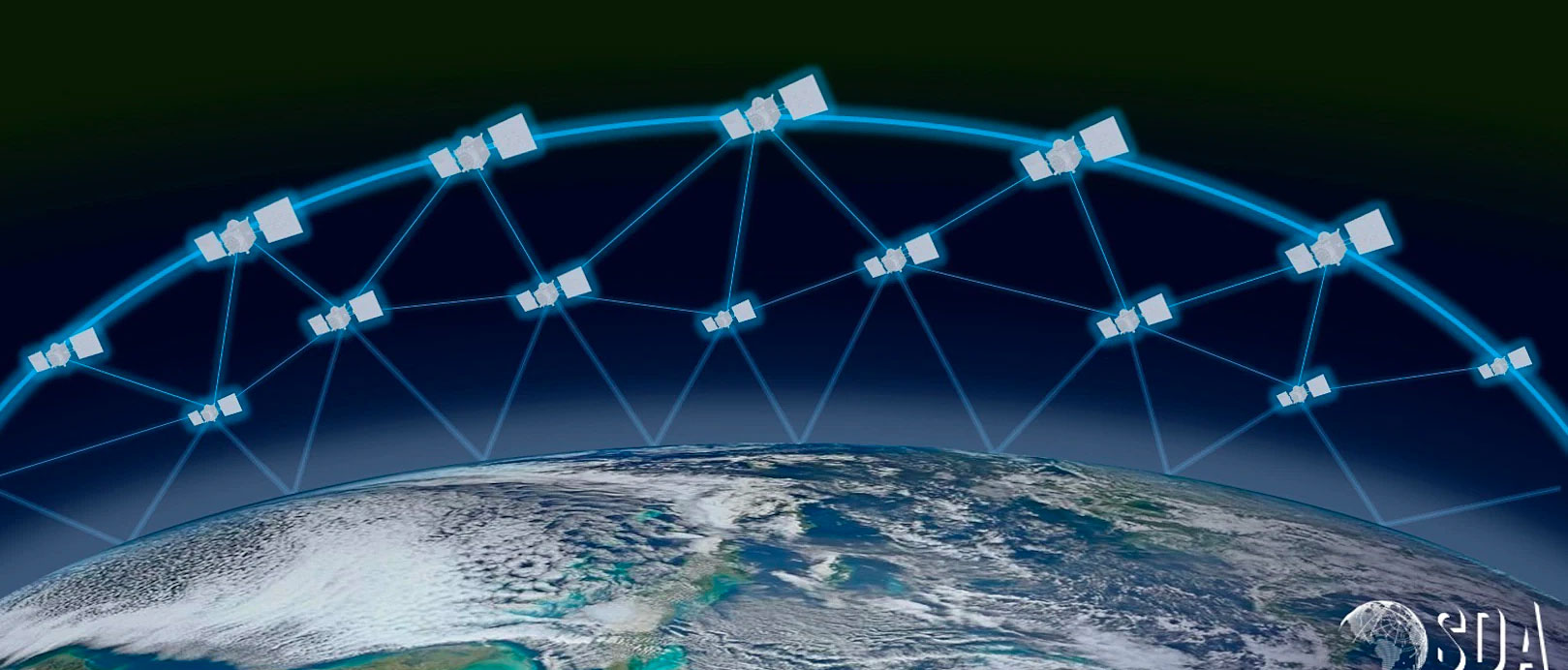
The Space Development Agency (SDA) of the Space Force is developing two constellations, a Tracking Layer constellation for warning of, tracking, and targeting advanced missile threats and a Transport Layer constellation providing connectivity to the full range of warfighter platforms.
There will be ISLLs, using SDA standard optical communication terminals, within and between the early constellations. The early satellites will use RF links to the ground, but optical links are planned.
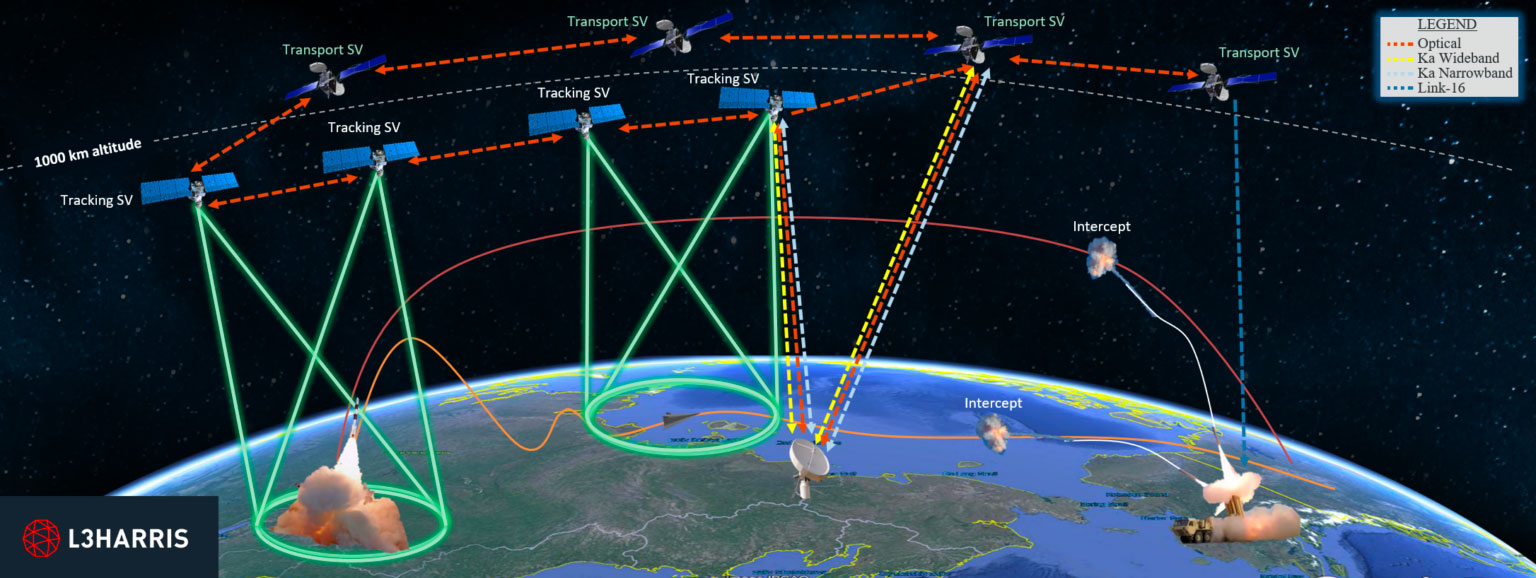
Space Force policy is to scale up its use of commercial capabilities and Mynaric has been awarded Tracking and Transport Layer contracts for their CONDOR Mk3 optical terminal. CACI International and Tesat terminals have also been certified and will be used—standards enable competition.
Mynaric has also been selected to participate in a demonstration of links between various space-based optical terminals and an optical ground station they will design.
The SDA is also working with Aalyria, a startup with two products, Tightbeam and Spacetime, that are based on intellectual property acquired from Google.
Tightbeam is an optical communication technology that sounds similar to that of ETH Zürich. Using adaptive mirrors and proprietary algorithms, they have transferred data to and from a local mountain at 400 Gbps per channel, (They can use four channels simultaneously). They recently signed a maritime contract for connectivity “starting at” 100 Gbps.
Tightbeam is only available through Spacetime, an extremely ambitious network operating system for controlling fixed and mobile assets and the links between them on Earth, in the air, and in space. Spacetime runs a simulation of the network and if an upcoming problem is predicted—for example a weather event or an airplane banking—Spacetime will reconfigure the network to route around it in 200 ms.
(Spacetime is open source with open APIs and Spacetime networks can “federate,” accessing each other’s assets to create a “network of networks.” Sound familiar? APIs are open and they hope to establish standards—reminiscent of Ethernet vs early proprietary LAN technology. I recommend watching this Spcetime presentation).
Intelsat has provided geostationary satellite communication since the 1960s and is also working with Aalyria on multi-orbit service and space-to-ground optical communication. (They are also considering a medium Earth orbit constellation—could federating with SES’s mPower constellation be an alternative to creating their own)?
I searched for and found two Chinese optical space-ground experiments, one by Beidou in 2021 and a recent test by The Chinese Academy of Sciences with a 10 Gbps transmission rate. I checked with Blaine Curcio, an expert on Chinese space, and he does not know of other tests.
If projects like the above succeed in developing cost-effective space-ground optical communication technology, we will need significant investment in well-designed ground infrastructure. Optical antennas can be added to existing RF ground stations or new optical ground stations can be built.
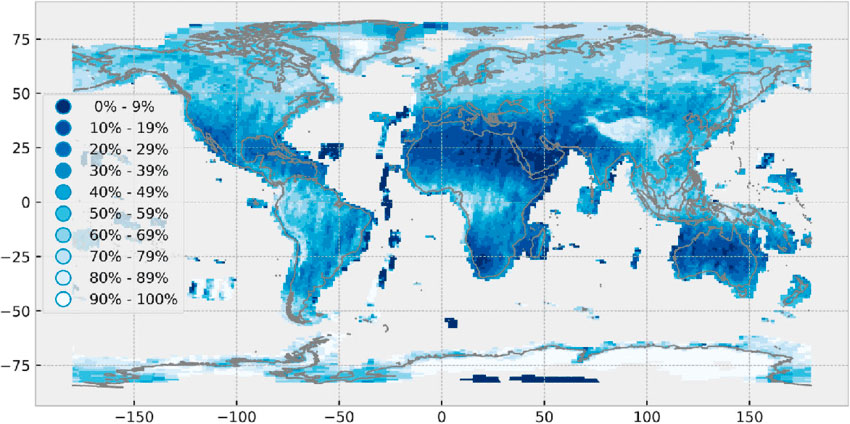
Augmenting existing ground stations makes sense if they are in suitable locations because they already have real estate, power, and Internet connectivity. For example, SpaceX has 75 gateways in North America, several of which are in arid regions of northern Mexico and the US southwest.
New ground stations with optical gateways will also be needed. They should be in relatively cloud-free places and, if possible, near centers of demand and locations with access to high-speed terrestrial Internet connections and power. The current locations of astronomical observatories might be considered.
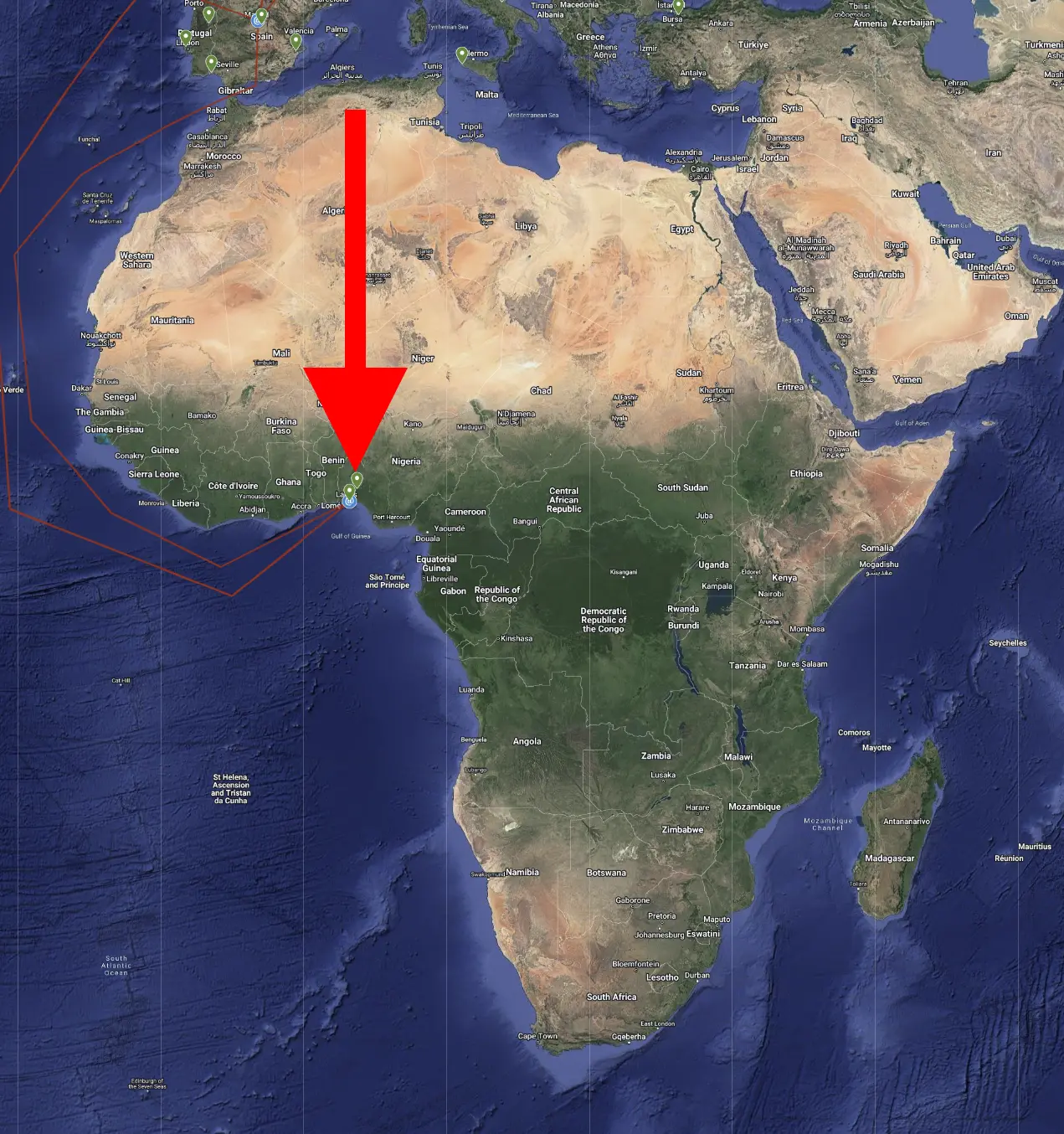
One of the United Nations Sustainable Development Goals is “to build resilient infrastructure, promote inclusive and sustainable industrialization and foster innovation”—to reduce the digital divide. The needs of underserved areas should also be considered in locating ground stations. Today, SpaceX has only two RF ground stations in Africa, and there are arid regions in the north and south that might be suitable locations for optical ground stations.
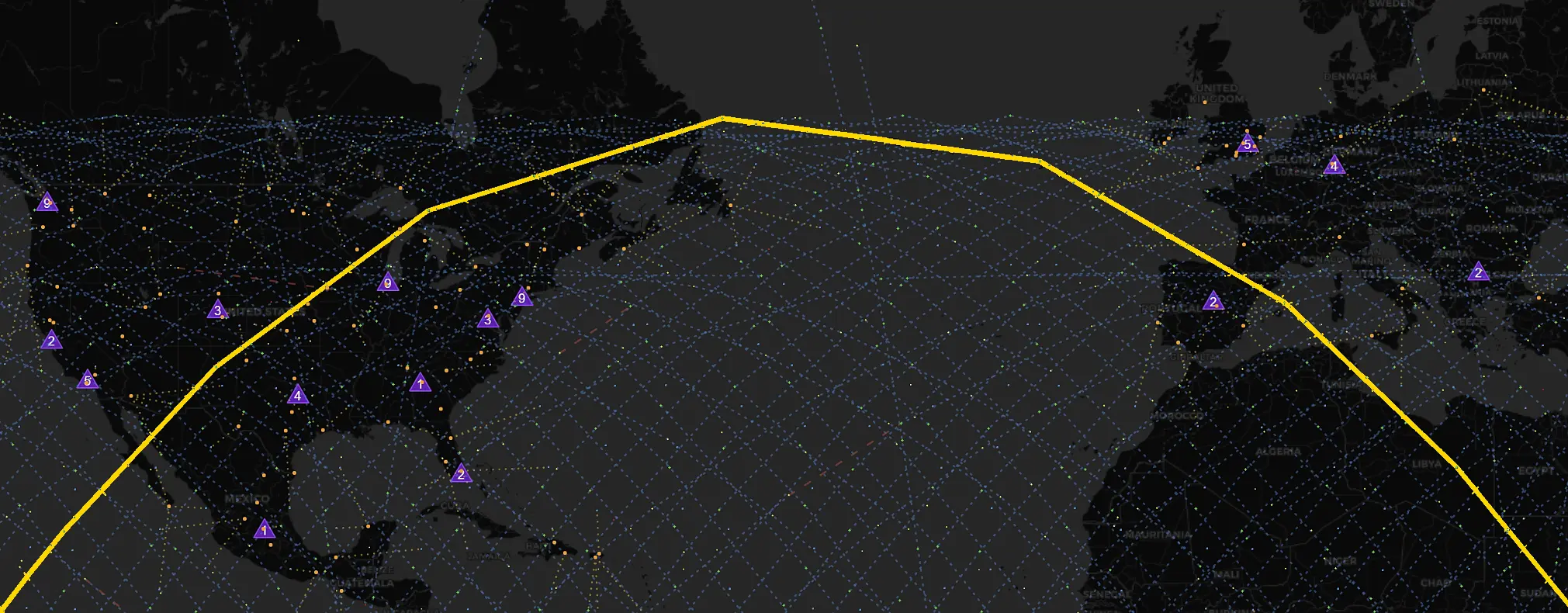
Even if locations are carefully selected, routing around unfavorable weather or other atmospheric problems will occur at times. That will be facilitated by the proliferation of ISLLs. Furthermore, the addition of ISLLs to sharply inclined orbits will facilitate routing around winter in the northern and southern hemispheres.
Update Nov 3, 2023:
NASA’s ILLUMA-T optical terminal will be delivered to the International Space Station in a SpaceX Cargo Dragon launch scheduled for no earlier than November 5. Once installed on the exterior of the space station it will enable two-way communication through the data relay satellite mentioned above to and from optical ground stations in Hawaii and California at 1.2 Gbps.
Update Jan 6, 2025:
Chang Guang Satellite Technology Co, which owns Jilin-1, the world’s largest sub-metre commercial remote sensing satellite constellation, said it achieved a 100 gigabit per second ultra-high-speed image data transmission rate in testing last weekend. Their goal is to network 300 imaging satellites using optical links to the ground by 2027. The optical payload weighs about 20kg (44lb), and the ground receiving unit is truck-based, making it mobile—an option that could lead to faster applications since it can move to locations that have a relatively clear sky.
Update May 19, 2025:
Kepler Validates SDA-Compatible Space-to-Ground Laser Links with Cailabs
Kepler Communications Inc. demonstrated space-to-ground optical data relay using its optical Pathfinder satellite and TESAT’s SCOT80 terminal in low Earth orbit (LEO), in partnership with French optical ground station provider Cailabs. This demonstration validates Kepler’s ability to achieve Space Development Agency (SDA) standard data rates in challenging scenarios and Cailabs’ optical ground station technology, which addresses atmospheric turbulence to ensure reliable data transfer.
I sent a note asking about test results or other details on Cailabs’ “optical ground station technology,” but did not get an answer.
Update Jun 19, 2025:
Chinese researchers have transmitted data at a rate of 1 Gb/s from a geostationary satellite with a 2-watt laser to a 1.8-meter telescope with 357 micro-mirrors, using both adaptive optics and mode diversity reception. They reported that this combined technique reduced errors significantly, with the chance of usable signals increasing from 72% to 91.1%.
Data transfer speed is critical for sending high-resolution images from space. In an earlier experiment, researchers from the remote sensing company Chang Guang Satellite Technology Ltd. (CGSTL) achieved a rate of 10 Gb/s from a satellite in sun‑synchronous orbit at approximately 528km altitude, communicating with a vehicle-mounted ground station, click here and here.
At the end of last year, CGSTL achieved a rate of 100 Gb/s from low-Earth orbit. CGSTL plans to “deploy these laser communication units across all satellites in [their] Jilin-1 constellation ... with a goal of networking 300 satellites by 2027.” They cannot retrofit satellites that are already in orbit, so it’s hard to say how many of the 300 will have inter-satellite and/or space-ground optical links.
You may recognize CGSTL as a manufacturer of Qianfan satellites. Might Quianfan get space-ground optical terminals?
Note that the European Space Agency is actively working on satellite-to-ground optical communication, but, as far as I know, they have not yet run tests comparable to the Chinese.
Sponsored byCSC

Sponsored byRadix

Sponsored byIPv4.Global

Sponsored byWhoisXML API

Sponsored byVerisign

Sponsored byVerisign

Sponsored byDNIB.com
